#AI Workflow Automation
Explore tagged Tumblr posts
Text
The AI Art Playbook:
Best Techniques That Will Change How You Create
Beginner Friendly Step by Step Guides with Examples
#art#evartology#artist#technology#artists#digitalart#painting#generativeart#ai art#ai workflow automation
0 notes
Text
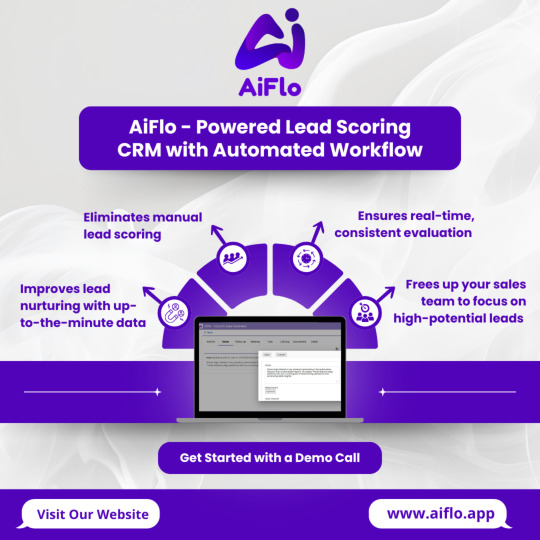
AI-Powered Lead Scoring
Transform your CRM with smarter lead scoring through AI-powered insights. Automatically prioritize leads based on behavior and engagement to maximize conversions and sales efficiency.
youtube
About Lead Scoring
Imagine your CRM system getting smarter with every note you add.
That’s exactly what AiFlo AI-powered workflow automation does.
Design a workflow in just few minutes to configure custom rules for lead scoring using Gen – AI
#AI Business Process Automation#Average Monthly Searches: 720#Competition Level: Medium#AI Workflow Automation#Average Monthly Searches: 880#Youtube
1 note
·
View note
Text
What is AI Workflow Automation | Bitcot
AI Workflow Automation simplifies business processes by leveraging artificial intelligence to automate repetitive tasks, improve efficiency, and reduce costs. At Bitcot, we specialize in creating intelligent solutions tailored to your business needs, helping you achieve seamless operations and stay ahead in today's competitive market.
Explore the future of automation with us: https://www.bitcot.com/ai-workflow-automation-modernization/
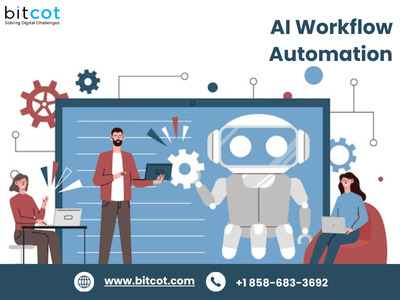
0 notes
Text
AI Factory: Pioneering Innovation with Advanced AI Solutions
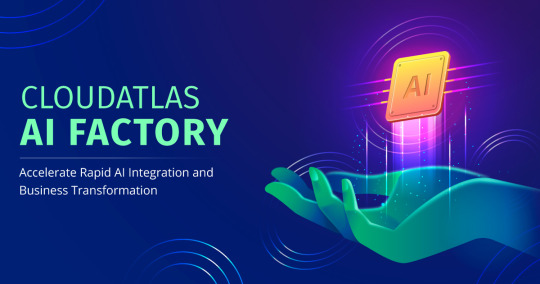
In today’s rapidly evolving digital landscape, businesses face unprecedented challenges and opportunities. Artificial Intelligence (AI) has emerged as a transformative force, enabling organizations to optimize operations, enhance decision-making, and deliver exceptional customer experiences. Enter the AI Factory—a revolutionary platform designed to empower businesses with scalable AI solutions tailored to their unique needs.
What is AI Factory?
The AI Factory is a cutting-edge platform that brings together advanced AI capabilities to streamline the development, deployment, and management of AI solutions. It serves as a comprehensive hub for:
AI Use Case Development
Proof of Concept (POC) Implementation
AI Solution Deployment
Lifecycle Management of AI Models
Explore more about the transformative potential of AI Factory on UnifyCloud’s AI Factory platform.
Why Businesses Need an AI Factory
The AI Factory addresses several critical pain points for organizations:
Scalability: Develop and deploy AI solutions that grow with your business.
Customization: Tailor AI models to address industry-specific challenges.
Efficiency: Automate workflows and reduce operational inefficiencies.
Cost Optimization: Manage resources effectively with tools like CloudAtlas AI Cost Optimize.
Industry-Specific Applications
Healthcare
The healthcare sector is witnessing a paradigm shift with AI-driven innovations:
Medical Imaging: Deploy AI POCs to analyze radiology images and identify anomalies with precision.
Patient Care: Leverage AI for personalized treatment plans and efficient hospital management systems.
Predictive Analytics: Harness AI to predict disease outbreaks and optimize resource allocation.
Learn more about how AI is revolutionizing healthcare on UnifyCloud’s AI solutions page.
Retail
Retail businesses can enhance customer experiences and streamline operations through AI:
Personalized Shopping: Use AI to analyze customer behavior and provide tailored recommendations.
Demand Forecasting: Implement AI POCs to predict market trends and adjust inventory levels accordingly.
Sentiment Analysis: Employ AI-driven tools to gauge customer feedback and improve service quality.
Explore how AI empowers retail on CloudAtlas AI Factory.
Finance
AI is transforming the financial services industry with:
Fraud Detection: Develop AI POCs to identify and prevent fraudulent activities in real-time.
Credit Risk Management: Utilize AI to assess creditworthiness and minimize risks.
Banking Automation: Enhance operational efficiency with generative AI for routine tasks.
Discover UnifyCloud’s innovative AI Guardian tool for compliance and security at CloudAtlas AI Guardian.
Manufacturing
The manufacturing industry benefits from AI in numerous ways:
Predictive Maintenance: Avoid equipment downtime with AI-driven insights.
Supply Chain Optimization: Streamline logistics and reduce costs with AI-powered analytics.
Product Design: Utilize generative AI to create innovative product designs.
For more insights, visit UnifyCloud’s CloudAtlas AI platform.
Construction
AI is making significant inroads in the construction industry:
Project Management: Implement AI POCs to manage timelines and resources effectively.
Safety Monitoring: Use AI to ensure worker safety and compliance with regulations.
Smart Infrastructure: Plan and execute intelligent infrastructure projects with AI insights.
Energy
The energy sector can achieve sustainability goals with AI:
Renewable Energy Forecasting: Predict energy generation patterns to optimize usage.
Smart Grid Management: Enhance energy distribution with AI-driven analytics.
Sustainable Planning: Leverage generative AI for eco-friendly energy solutions.
Visit UnifyCloud’s CloudAtlas AI Factory to explore sustainable AI innovations.
Solution-Specific Capabilities
AI Development and Deployment
Model Training: Build and train robust AI models tailored to specific business needs.
Lifecycle Management: Manage AI models from development to deployment.
Generative AI Solutions: Create innovative content and workflows with advanced generative AI tools.
Learn how CloudAtlas AI simplifies AI development and deployment.
Data Analytics
Big Data Insights: Analyze vast datasets for actionable insights.
Predictive Analytics: Forecast trends and make data-driven decisions.
Visualization: Use generative AI for intuitive and impactful data visualizations.
Automation
Business Process Automation: Streamline operations with AI-powered automation tools.
Robotic Process Automation (RPA): Implement AI POCs for efficient task automation.
Workflow Optimization: Enhance productivity with intelligent automation solutions.
Sustainability and Customer Experience
Environmental Impact Assessments: Use AI to evaluate and minimize ecological footprints.
Personalized User Experiences: Leverage generative AI for tailored customer interactions.
Sentiment Analysis: Gauge customer feedback to refine services.
Why Choose UnifyCloud’s AI Factory
UnifyCloud’s AI Factory offers:
Comprehensive Solutions: From AI development to deployment, all under one roof.
Proven Expertise: Decades of experience in delivering AI-driven business innovations.
Customizable Tools: Tailored solutions to meet unique industry demands.
Cost Efficiency: Optimize your investments with AI Cost Optimize tools.
Discover the future of AI with UnifyCloud’s CloudAtlas AI Factory.
Conclusion
The AI Factory is more than a platform; it’s a gateway to innovation and growth. By integrating AI into your business, you can unlock new opportunities, drive efficiency, and stay ahead in a competitive market. With UnifyCloud’s comprehensive suite of AI solutions, the journey from concept to execution becomes seamless. Explore the limitless possibilities of AI with UnifyCloud’s AI Factory today.
Learn More About AI Factory from Azure Marketplace – AI Factory | AI Cost Optimize | AI Guardian
#AI Development Platform#AI Proof of Concept#AI Pilot Deployment#AI Production Solutions#AI Innovation Services#AI Implementation Strategy#AI Workflow Automation#AI Operational Efficiency#AI Business Growth Solutions#AI Cost Optimization#AI Cost Management#AI Cost Reduction Strategies#AI Cost Efficiency Solutions#AI Cost Control Services#AI Cost Savings#AI Cost Monitoring#AI Cost Assessment#AI Integration Solutions#AI Innovation Platforms#AI Compliance Services
0 notes
Text

maybe i dont have the 'growth mindset' necessary to work in the industry but my first thought upon reading this was "kill yourself"
#okay i admit i dont really know how theyre incorporating “AI” into the workflow but as of now i cant imagine its better than automating#like yeah you just automate your workflow. everyone does it. why “AI”.#its just extremely annoying to see even high level educational institutions just throw this shit in. bro its been out for like 3-4 years...#everything looks like a nail type shit
246 notes
·
View notes
Text
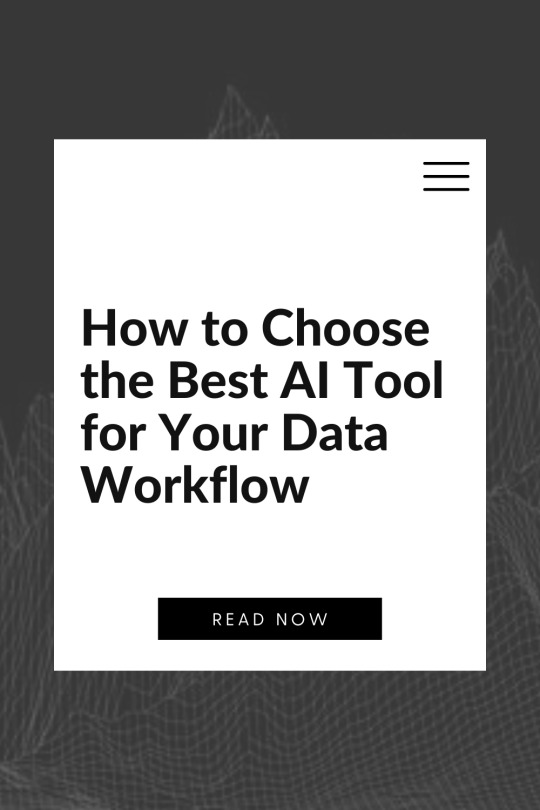
How to Choose the Best AI Tool for Your Data Workflow
AI isn’t just changing the way we work with data, it’s opening doors to entirely new possibilities. From streamlining everyday tasks to uncovering insights that were once out of reach, the right AI tools can make your data workflow smarter and more efficient. But with so many options out there, finding the one that fits can feel like searching for a needle in a haystack. That’s why taking the time to understand your needs and explore your options isn’t just smart, it’s essential.
In this guide, we’ll walk you through a proven, easy-to-remember decision-making framework: The D.A.T.A. Method: a 4-step process to help you confidently choose the AI tool that fits your workflow, team, and goals.

The D.A.T.A. Method: A Framework for Choosing AI Tools
The D.A.T.A. Method stands for:
Define your goals
Analyze your data needs
Test tools with real scenarios
Assess scalability and fit
Each step provides clarity and focus, helping you navigate a crowded market of AI platforms with confidence.
Step 1: Define Your Goals
Start by identifying the core problem you’re trying to solve. Without a clear purpose, it’s easy to be distracted by tools with impressive features but limited practical value for your needs.
Ask yourself:
What are you hoping to achieve with AI?
Are you focused on automating workflows, building predictive models, generating insights, or something else?
Who are the primary users: data scientists, analysts, or business stakeholders?
What decisions or processes will this tool support?
Having a well-defined objective will help narrow down your choices and align tool functionality with business impact.
Step 2: Analyze Your Data Needs
Different AI tools are designed for different types of data and use cases. Understanding the nature of your data is essential before selecting a platform.
Consider the following:
What types of data are you working with? (Structured, unstructured, text, image, time-series, etc.)
How is your data stored? (Cloud databases, spreadsheets, APIs, third-party platforms)
What is the size and volume of your data?
Do you need real-time processing capabilities, or is batch processing sufficient?
How clean or messy is your data?
For example, if you're analyzing large volumes of unstructured text data, an NLP-focused platform like MonkeyLearn or Hugging Face may be more appropriate than a traditional BI tool.
Step 3: Test Tools with Real Scenarios
Don’t rely solely on vendor claims or product demos. The best way to evaluate an AI tool is by putting it to work in your own environment.
Here’s how:
Use a free trial, sandbox environment, or open-source version of the tool.
Load a representative sample of your data.
Attempt a key task that reflects a typical use case in your workflow.
Assess the output, usability, and speed.
During testing, ask:
Is the setup process straightforward?
How intuitive is the user interface?
Can the tool deliver accurate, actionable results?
How easy is it to collaborate and share results?
This step ensures you're not just selecting a powerful tool, but one that your team can adopt and scale with minimal friction.
Step 4: Assess Scalability and Fit
Choosing a tool that meets your current needs is important, but so is planning for future growth. Consider how well a tool will scale with your team and data volume over time.
Evaluate:
Scalability: Can it handle larger datasets, more complex models, or multiple users?
Integration: Does it connect easily with your existing tech stack and data pipelines?
Collaboration: Can teams work together within the platform effectively?
Support: Is there a responsive support team, active user community, and comprehensive documentation?
Cost: Does the pricing model align with your budget and usage patterns?
A well-fitting AI tool should enhance (not hinder) your existing workflow and strategic roadmap.
“The best tools are the ones that solve real problems, not just the ones with the shiniest features.”
— Ben Lorica (Data scientist and AI conference organizer)
Categories of AI Tools to Explore
To help narrow your search, here’s an overview of AI tool categories commonly used in data workflows:
Data Preparation and Cleaning
Trifacta
Alteryx
DataRobot
Machine Learning Platforms
Google Cloud AI Platform
Azure ML Studio
H2O.ai
Business Intelligence and Visualization
Tableau – Enterprise-grade dashboards and visual analytics.
Power BI – Microsoft’s comprehensive business analytics suite.
ThoughtSpot – Search-driven analytics and natural language querying.
DataPeak by Factr – A next-generation AI assistant that’s ideal for teams looking to enhance decision-making with minimal manual querying.
AI Automation and Workflow Tools
UiPath
Automation Anywhere
Zapier (AI integrations)
Data Integration and ETL
Talend
Fivetran
Apache NiFi
Use the D.A.T.A. Method to determine which combination of these tools best supports your goals, data structure, and team workflows.
AI Tool Selection Checklist
Here’s a practical checklist to guide your evaluation process:
Have you clearly defined your use case and goals?
Do you understand your data’s structure, source, and quality?
Have you tested the tool with a real-world task?
Can the tool scale with your team and data needs?
Is the pricing model sustainable and aligned with your usage?
Does it integrate smoothly into your existing workflow?
Is support readily available?
Selecting the right AI tool is not about chasing the newest technology, it’s about aligning the tool with your specific needs, goals, and data ecosystem. The D.A.T.A. Method offers a simple, repeatable way to bring structure and strategy to your decision-making process.
With a thoughtful approach, you can cut through the noise, avoid common pitfalls, and choose a solution that genuinely enhances your workflow. The perfect AI tool isn’t the one with the most features, it’s the one that fits your needs today and grows with you tomorrow.
Learn more about DataPeak:
#datapeak#factr#saas#technology#agentic ai#artificial intelligence#machine learning#ai#ai-driven business solutions#machine learning for workflow#digitaltools#digital technology#digital trends#datadrivendecisions#dataanalytics#data driven decision making#agentic#ai solutions for data driven decision making#ai business tools#aiinnovation#ai platform for business process automation#ai business solutions
0 notes
Text
OnGrid Unveils Instant BGV to Supercharge Hiring Workflows
The Need for Speed in Hiring
In a hyper-competitive job market, companies can’t afford slow background checks. Traditional background verification processes often take days—sometimes even weeks—causing onboarding delays and candidate drop-offs. That’s where instant BGV comes in as a game-changer.
What Is Instant BGV?
Instant BGV refers to a digital-first, technology-driven approach to background verification that delivers results in minutes instead of days. With OnGrid’s newly launched instant BGV solution, companies can now verify a candidate’s identity, address, criminal record, employment history, and even face match—all within a few clicks.
Key Features of OnGrid’s Instant BGV
AI-Powered OCR: Automatically extracts and validates candidate data from uploaded documents.
Real-Time Checks: Enables instant identity, address, employment, and criminal verifications.
Bulk Upload & API Integration: Designed to handle high-volume hiring needs.
Data Privacy & Compliance: Built with enterprise-grade encryption and adherence to India’s DPDP Act.
Benefits for Employers and Candidates
With OnGrid’s instant BGV, hiring teams save up to 60% of their time. Candidates enjoy a seamless onboarding experience with less waiting and more transparency. The system also minimizes manual errors, ensures better compliance, and supports scalable growth for enterprises and startups alike.
The Future of Hiring Is Instant
As hiring accelerates across sectors like tech, gig work, logistics, and BFSI, solutions like OnGrid’s instant BGV are not just helpful—they’re essential. Fast, reliable, and compliant background checks are now just a few clicks away.
#instant BGV#background verification#OnGrid#hiring workflows#HR technology#digital onboarding#candidate verification#employee background check#real-time BGV#AI in hiring#bulk verification#onboarding automation#remote hiring#BGV API#tech-driven recruitment
0 notes
Text
Byepaper Accounting Document Management for Seamless Organization
Looking for a smarter way to handle accounting documents? Byepaper offers AI-powered accounting document management software that helps businesses securely store, organize, and retrieve invoices, receipts, and financial records with ease. Our solution simplifies compliance, reduces manual errors, and ensures data accuracy for audits and reporting. Collaborate effortlessly with your team, streamline approval processes, and access critical documents anytime, anywhere. Byepaper’s intuitive platform is designed to save time and enhance productivity, making your accounting operations more efficient and stress-free.

#accounting document management software#accounting document automation#ai in financial services#digital bookkeeping#bookkeeping automation ai#accounting workflow software
0 notes
Text
How to Use AI as a Brainstorming Tool for Faster, Better Ideas
How to Use AI as a Brainstorming Tool for Faster, Better Ideas Never Start with a Blank Page Again (Seriously) You know that moment, the one where your mind goes blank, your screen’s taunting you with that blinking cursor, and your coffee’s already cold? Yeah, we’ve all been there. But what if I told you that AI can help you skip the mental block and start creating faster? Whether you’re…
#AI automation for entrepreneurs#AI automation for service-based businesses#AI business strategy#AI strategies for business growth#AI tools for solopreneurs#AI workflow optimization#AI-driven content creation for entrepreneurs#AI-powered business coaching#Business Growth#Business Strategy#Entrepreneur#Entrepreneurship#How to implement AI in small business operations#Lori Brooks#Productivity#Small business AI tools#Technology Equality#Time Management
0 notes
Text
AI Automation: Transforming the Future of Work and Business

Artificial Intelligence (AI), a modern powerhouse that is transforming sectors, is no longer a sci-fi idea in the digital age. AI automation, which combines automated procedures with intelligent systems, is one of its most significant uses. This combination is changing how companies function, boosting productivity, cutting expenses, and creating new opportunities in a variety of industries. AI Automation: What Is It? The term "AI automation" describes the process of automating complicated processes that normally call for human intelligence by utilizing artificial intelligence technologies like computer vision, machine learning, and natural language processing. AI automation has the ability to learn, adapt, and make judgments based on data, in contrast to traditional automation, which adheres to predetermined rules and scripts. Examples include:
Customer support, where AI chat bots offer round-the-clock assistance through human-like communication.
Manufacturing: Data-driven intelligent robots modify procedures in real time
Advantages of AI Automation:
1. Enhanced Productivity
AI systems are more efficient than humans at repeated jobs and operate around the clock.
They streamline processes, cutting down on errors and bottlenecks.
2. Savings on expenses
Minimizes the need for big teams to do repetitive activities.
Reduces downtime and enhances the use of resources.
3. Data-Informed Choices
AI analyses enormous datasets to find trends and insights that people would overlook.
Aids in market research and strategic planning.
4. Improved Experience for Customers Personalized suggestions and prompt assistance boost client loyalty and pleasure. 5. Scalability It is simple to grow processes without increasing the staff proportionately. Industries AI is used in
AI Automation in Healthcare: AI helps with administrative, patient monitoring, and diagnostic duties.
Retail: Customer insights, inventory control, and tailored marketing.
Logistics: Demand forecasting, warehouse automation, and route optimisation.
Banking: Algorithmic trading, risk assessment, and customer onboarding.
Human Resources: Performance evaluation, candidate matching, and resume screening.
Upcoming Developments in AI Automation
Hyper automation: End-to-end business automation through the integration of AI with other technologies such as IoT, RPA (Robotic Process Automation), and low-code platforms.
AI programs that are capable of handling complicated jobs on their own, such managing supply chains or negotiating contracts, are known as autonomous agents.
Edge AI: Making choices more quickly and securely by processing data locally on devices rather than in centralized systems.
Explainable AI: Increasing decision-making transparency in AI to increase compliance and confidence.
In conclusion AI automation is not merely a fad; rather, it is a revolutionary force that is changing the way we collaborate, communicate, and create. The benefits are substantial for companies that are prepared to use it: competitive advantage, efficiency, and agility. But for adoption to be effective, the associated social, economic, and ethical issues must also be resolved. One thing is certain as we proceed: AI automation is here to stay, and the future will be dominated by those who can adjust.
Visit: Toolfe for Toolfe Process Automation services and Automate your business
1 note
·
View note
Text
Discover the Best AI Automation Tools for Your Business
Artificial intelligence is revolutionizing the way businesses operate, and choosing the right automation tools is key to unlocking its full potential. According to MIT research, companies that strategically implement AI-driven automation see a significant boost in productivity. For business leaders, the challenge isn’t deciding whether to adopt AI automation tools — it’s determining which tools…
#AI-driven processes#Artificial intelligence tools#Automation technology#Business automation solutions#Machine learning software#Smart business automation#Workflow optimization tools
0 notes
Text
Effortless REACH Compliance with Certivo’s AI‑Powered Inventory Management Platform
Certivo’s AI‑powered platform makes REACH compliance seamless and stress‑free. The solution centralizes inventory management and streamlines regulatory compliance by automatically tracking material disclosures, managing REACH regulations, and flagging Restricted Substance updates. With comprehensive inventory management workflows and proactive risk alerts, Certivo empowers businesses to efficiently meet EU and UK market requirements. Automate your REACH obligations — from dossier preparation to supplier communication — without manual effort or compliance delays. Simplify processes, reduce risk, and get market-ready faster with Certivo’s intelligent REACH compliance solution.

#AI‑powered REACH compliance platform#automated REACH inventory management tool#streamline regulatory compliance for EU market#REACH regulation compliance software#inventory management workflow for compliance#Certivo REACH compliance solution#AI compliance for REACH regulation#REACH compliance risk management automation#REACH material disclosure management platform#EU UK REACH compliance inventory system
0 notes
Text
#AI Factory#AI Cost Optimize#Responsible AI#AI Security#AI in Security#AI Integration Services#AI Proof of Concept#AI Pilot Deployment#AI Production Solutions#AI Innovation Services#AI Implementation Strategy#AI Workflow Automation#AI Operational Efficiency#AI Business Growth Solutions#AI Compliance Services#AI Governance Tools#Ethical AI Implementation#AI Risk Management#AI Regulatory Compliance#AI Model Security#AI Data Privacy#AI Threat Detection#AI Vulnerability Assessment#AI proof of concept tools#End-to-end AI use case platform#AI solution architecture platform#AI POC for medical imaging#AI POC for demand forecasting#Generative AI in product design#AI in construction safety monitoring
0 notes
Text
#AI applications in agile and hybrid project management#Smart automation tools for efficient workflow execution#Real-world case studies of AI-driven project success#Spotify
0 notes
Text
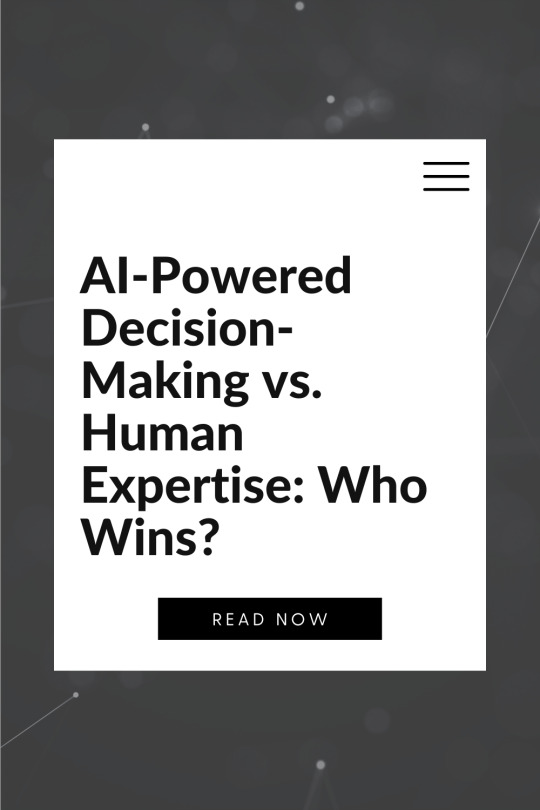
AI-Powered Decision-Making vs. Human Expertise: Who Wins?
Artificial intelligence is already woven into the fabric of our daily lives. Whether you're getting personalized song suggestions on Spotify, seeing curated content on Netflix, navigating traffic with Google Maps, or having your email sorted by importance in Gmail, AI is quietly and powerfully shaping the choices we make. These AI-driven tools are making decisions on our behalf every day, often without us even realizing it.
As AI continues to evolve, its role is expanding from recommending entertainment to influencing high-stakes decisions in healthcare, finance, law enforcement, and beyond. This growing presence raises a critical question: Can AI truly make better decisions than experienced human professionals or does it still fall short in areas where human judgment and intuition reign supreme?
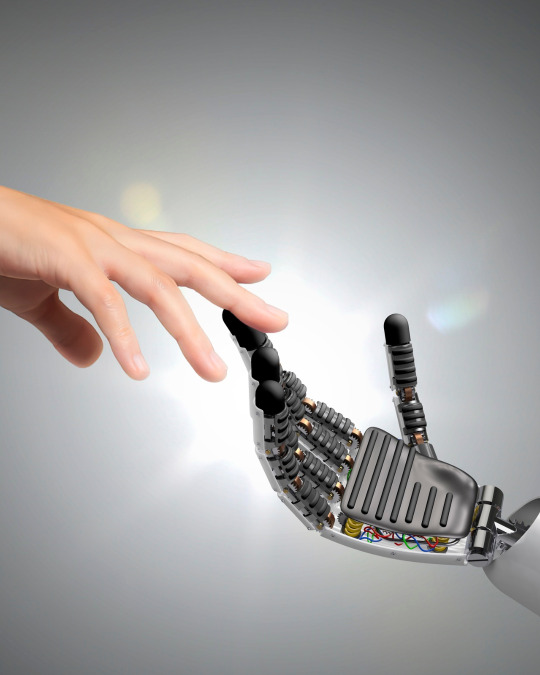
Understanding the Players: AI and Human Experts
What Is AI-Powered Decision-Making?
AI-powered decision-making refers to the use of algorithms, often driven by machine learning, neural networks, and deep learning, to analyze large datasets and generate insights, predictions, or recommendations. These systems can learn from experience, identify patterns humans may miss, and make decisions without fatigue or bias (at least in theory).
Key strengths include:
Speed and scale: AI can process terabytes of data in seconds.
Pattern recognition: It detects trends and anomalies better than humans in complex datasets.
Consistency: AI doesn’t suffer from emotions, distractions, or exhaustion.
What Defines Human Expertise?
Human expertise, on the other hand, is built on years, sometimes decades, of learning, intuition, and contextual understanding. An expert blends theoretical knowledge with practical experience, social awareness, and ethical judgment.
Human strengths include:
Contextual understanding: Experts can interpret ambiguous or nuanced situations.
Empathy and ethics: Humans bring emotional intelligence and moral reasoning to decisions.
Adaptability: Experts can pivot strategies in response to changing circumstances or incomplete data.
So, which is better? As with many complex questions, the answer depends on the context.
When AI Outperforms Humans
1. Data-Heavy Decisions
AI shines when the decision-making process requires analyzing vast amounts of data quickly. In fields like finance and healthcare, AI systems are revolutionizing decision-making.
Example: Medical diagnostics. AI algorithms trained on millions of medical images have demonstrated higher accuracy than radiologists in detecting certain cancers, such as breast and lung cancers. These systems can spot subtle patterns undetectable to the human eye and reduce diagnostic errors.
2. Predictive Analytics
AI’s ability to forecast outcomes based on historical data makes it incredibly powerful for strategic planning and operations.
Example: Retail and inventory management. AI can predict which products will be in demand, when restocking is necessary, and how pricing strategies will affect sales. Amazon’s supply chain and logistics systems are powered by such predictive tools, allowing for just-in-time inventory and efficient deliveries.
3. Repetitive, Rule-Based Tasks
AI thrives in environments where rules are clear and outcomes can be mathematically modelled.
Example: Autonomous vehicles. While not perfect, AI is capable of processing sensor data, mapping environments, and making real-time navigation decisions; tasks that are highly rule-based and repetitive.
Where Human Expertise Wins
1. Complex, Ambiguous Situations
Humans excel in “grey areas” where rules are unclear, data is incomplete, and judgment calls must be made.
Example: Crisis management. In rapidly evolving scenarios like natural disasters or geopolitical conflicts, experienced human leaders are better at weighing intangible factors such as public sentiment, cultural nuances, and ethical trade-offs.
2. Empathy and Human Interaction
Some decisions require understanding human emotions, motivations, and relationships which are areas where AI still lags significantly.
Example: Therapy and counselling. While AI chatbots can offer basic mental health support, human therapists offer empathy, intuition, and adaptive communication that machines cannot replicate.
3. Ethical Judgment
Ethical dilemmas often involve values, societal norms, and moral reasoning. Human decision-makers are uniquely equipped to handle such complexity.
Example: Autonomous weapons and warfare. Should an AI-powered drone have the authority to make life-or-death decisions? Most ethicists and governments agree that moral accountability should rest with humans, not algorithms.
“The goal is to create AI that can collaborate with people to solve the world’s toughest problems, not replace them.”
— Demis Hassabis (CEO and Co-founder of DeepMind)
AI vs. Human in Chess and Beyond
In 1997, IBM’s Deep Blue defeated world chess champion Garry Kasparov; a symbolic moment that marked AI’s growing capabilities. Today, AI engines like AlphaZero play chess at a superhuman level, discovering strategies that human players never imagined.
But even Kasparov himself has advocated for “centaur chess” which is a form of play where humans and AI collaborate. He argues that human intuition, combined with machine calculation, makes for the most powerful chess strategy.
This concept extends beyond the game board. In many domains, the ideal approach may not be AI versus humans, but AI with humans.
Toward a Collaborative Future: The Human-AI Team
Rather than replacing humans, the most promising applications of AI lie in augmenting human decision-making. This “centaur model” or “human-in-the-loop” approach brings out the best in both.
Examples of Human-AI Collaboration:
Healthcare: AI can screen X-rays, while doctors make the final diagnosis and communicate with patients.
Recruitment: AI can sort resumes and highlight top candidates, but human recruiters assess cultural fit and conduct interviews.
Customer service: AI chatbots handle routine queries, while complex issues are escalated to human agents.
This hybrid approach ensures accuracy, empathy, and accountability, all while improving efficiency.
Challenges & Considerations
Even as we embrace AI, several challenges must be addressed:
Bias in AI: If the data AI learns from is biased, its decisions will be too. Human oversight is essential to ensure fairness and ethical outcomes.
Transparency: Many AI systems are “black boxes,” making it hard to understand how decisions are made.
Accountability: Who is responsible when an AI system makes a wrong call? Legal and regulatory frameworks are still catching up.
Job displacement: As AI takes over certain tasks, reskilling and transitioning the workforce become critical priorities.
Final Verdict: Who Wins?
The battle between AI and human expertise doesn’t have a single winner because it's not a zero-sum game. AI wins in data-heavy, rules-based, and high-speed environments. Humans excel in judgment, empathy, and moral reasoning. The true power lies in collaboration.
As we move into the next phase of digital transformation, the organizations and societies that will thrive are those that leverage both machine precision and human wisdom. In this partnership, AI isn’t replacing us, it’s empowering us.
So the real question isn’t "who wins?" it’s "how do we win together?"
Learn more about DataPeak:
#datapeak#factr#saas#technology#agentic ai#artificial intelligence#machine learning#ai#ai-driven business solutions#machine learning for workflow#ai solutions for data driven decision making#ai business tools#aiinnovation#digitaltools#digital technology#digital trends#dataanalytics#data driven decision making#data analytics#ai platform for business process automation#ai driven business solutions#ai business solutions#business#cloudmigration#cloudcomputing#no code
0 notes
